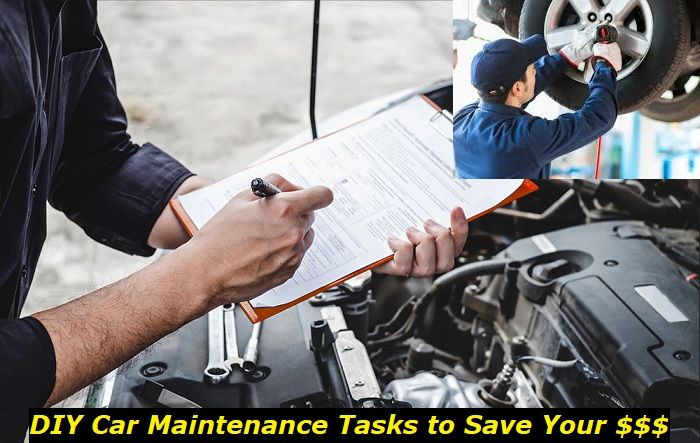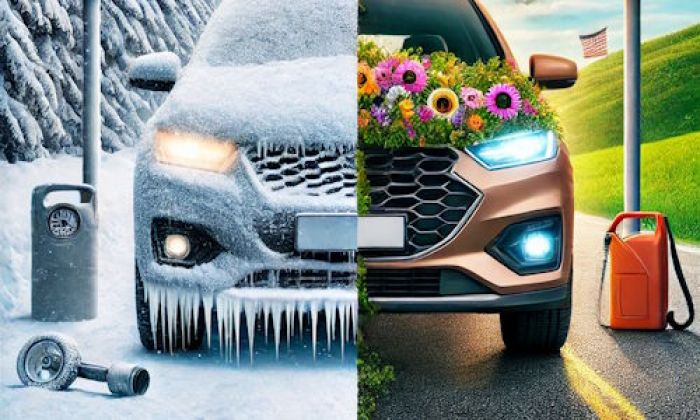The P2422 error code may be triggered by the purge valve, EVAP vent valve, EVAP canister, or even fuel tank problems. You should start checking the possible issues with the gas cap and some easier-to-understand problems and then move to check the valves and sensors that may be faulty.
P2422 code highlights
- Level of urgency:High
- Possible culprits:EVAP canister vent valve problems
- Price for repair:$150 - $250
- If neglected:Emission codes and alerts, vacuum in fuel tank, fuel pump problems
- DIY repairs:Impossible
- Can you drive?Not for long

What should you know about the P2422 code in the CR-V?
Originally, the message that comes with this code reads: "EVAP Vent Valve Stuck Closed". And inexperienced car owners may think that they can handle this on their own. Well, yes, replacing the vent valve on the EVAP canister is not that hard and you can really do this on your own, but in the majority of cases, you will not get any results. So, the P2422 code will keep on amusing you with the check engine light on the dash.
The P2422 code means the following:
- there is a problem with the EVAP canister because it can't do its job correctly;
- the pressure somewhere in the system is too high and the vent valve has to release a lot of vapors into the atmosphere;
- maybe, something is clogged in the system of EVAP and needs proper cleaning because air can't come through;
- the vent valve may feel like it's stuck closed but it actually keeps working while some other parts may be broken.
Although this problem can be triggered by a stuck EVAP vent valve, it's very often caused by other issues. Before you start buying one valve after another and spending hundreds of bucks to check your own theories, inspect the car better and start checking with the well-known common problems in this vehicle.
What are the possible reasons for the P2422 code in the CR-V?
So, I will list the common reasons for the P2422 code to show up in your Honda CR-V. Unfortunately, there are sometimes little to no ways to check a certain part, so if nothing works, you will still need a professional inspection. It's often cheaper to pay for diagnostics and get answers to your questions than to replace one part after another and get zero results.
Here are the common issues that trigger the P2422 code:
1. Fuel tank pressure sensor
This is also called the FTP sensor and it's located on one of the banks of the EVAP canister. It's connected to the fuel tank by a line that very often gets dirty and sends some contaminants to the sensor. And this is actually the primary reason why it may get bad.
So, just replacing the sensor with a new one is not a good solution. You should clean the vacuum line that connects this sensor to the tank. Otherwise, you risk getting serious problems with the new sensor.
Also, make sure you buy the OEM FTP sensor. They don't cost much more expensive than aftermarket ones but will certainly live longer and do their job better.
2. EVAP canister
Unfortunately, this canister most likely won't live as long as your marvelous SUV. EVAP canisters are pretty faulty, especially in the third-gen Honda CR-V. They may get dirty, something may get stuck and the canister will just not work as it should.
In the end, you will see that the EVAP canister throws different codes and one of them may be the P2422 code. Instead of throwing you money to buy a new vent valve, you should buy the entire canister assembly and install it. I strongly recommend installing the new FTP sensor and also cleaning the hoses and lines in the process.
This is not a DIY task, so you will certainly need professional help.
3. Purge valve
This valve lets the excessive vapor to be sucked into the engine and burned there. This is actually what the EVAP canister is there for. It gathers the fuel vapors instead of just throwing them into the atmosphere and then sends them to the engine where they burn and cause much less harm to the environment, in the end.
If the purge valve is stuck closed, the pressure in the EVAP canister may be building up quite high. The vent valve may eventually be affected and you will get the check engine light and the P2422 code.
Replacing the purge valve is only advised when it's proven to be faulty. These parts are pretty tough and durable in the CR-V.
4. Vent valve in the EVAP
The fourth place goes to the ventilation valve in the EVAP canister that can actually get stuck. But it doesn't happen that often and this is why I only place this in the fourth position. Very often, the vent valve code will tell you about some other problem - one of the listed above.
Interestingly, you will be able to replace the vent valve in this canister on your own without taking off the entire part. You will just need a good car lift and several simple tools.
5. Gas cap
Whenever it comes to the problems with EVAP system or air pressure in the fuel tank, you should always check the gas cap first. Gas caps are not just plugs that close the tube. They let some air in and let the tank breathe. Actually, the cap is not commonly faulty in the CR-V but it's worth checking in the first place because it's easy to replace.
You can just get a cap from another CR-V of your generation and check if this helps you solve the P2422 code problem. If not, you will have to check some other, more common, problems.
Solving the problem - DIY or professional repair?
There isn't much you can do on your own when it comes to CR-V repair. The car is pretty complicated and even locating a certain valve or sensor may be challenging unless you have some proper experience.
But when the P2422 code is bothering you, there are several things you can try:
- install another gas cap, maybe even buy a used one from a scrapyard, to see that this is not the reason for your problem;
- try checking the EVAP canister - maybe you can locate a disconnected hose or a corroded electrical connection;
- you may also replace the EVAP vent valve and the purge valve on your own with just some YouTube guides.
Also, you may need to have an OBD2 scanner to clear the code after every step. You may replace the gas cap and this will solve the issue. But the code is not going to disappear right away. The proper way is to clear it, then drive the car and see if the code reappears.
Here's when you may need professional help:
- nothing works and you just can't locate the problem;
- replacing the EVAP canister is certainly not a DIY task - let specialists do that;
- replacing the fuel tank pressure sensor is not hard, but before this, you will need to clean the lines and tubes which is not a DIY job;
- also, when you are doing this, you may want to clean the EVAP canister and the fuel tank.
Unfortunately, each of these tasks is going to cost you a lot. Honda parts are not cheap and the labor is also pretty expensive. So, be ready to spend some money to solve this problem.
Can you drive with the P2422 code in the CR-V?
If your Honda CR-V has the active P2422 code, you can still drive. It doesn't mean that something is going to be wrong with the engine. Actually, the EVAP canister is only connected with the engine through the purge valve and even if something is going wrong with it, the most expensive parts of your CR-V are safe.
But still, looking at the check engine light all the time and understanding that something is wrong with the car is not a good idea.
The P2422 code means several things may be wrong:
- the pressure in the tank may go wrong and affect the work of the fuel supply system;
- the EVAP system is not functioning well and may throw a lot of vapors into the atmosphere;
- the stuck valves can lead to damage to other parts of the canister.
So, it's often cheaper and more convenient to address this problem right when you notice it. But still, if this issue happens to your CR-V when you are between two cities on the highway, you may keep driving and just plan the visit to the dealership as soon as possible.
About the authors
The CarAraC research team is composed of seasoned auto mechanics and automotive industry professionals, including individuals with advanced degrees and certifications in their field. Our team members boast prestigious credentials, reflecting their extensive knowledge and skills. These qualifications include: IMI: Institute of the Motor Industry, ASE-Certified Master Automobile Technicians; Coventry University, Graduate of MA in Automotive Journalism; Politecnico di Torino, Italy, MS Automotive Engineering; Ss. Cyril and Methodius University in Skopje, Mechanical University in Skopje; TOC Automotive College; DHA Suffa University, Department of Mechanical Engineering






Add comment